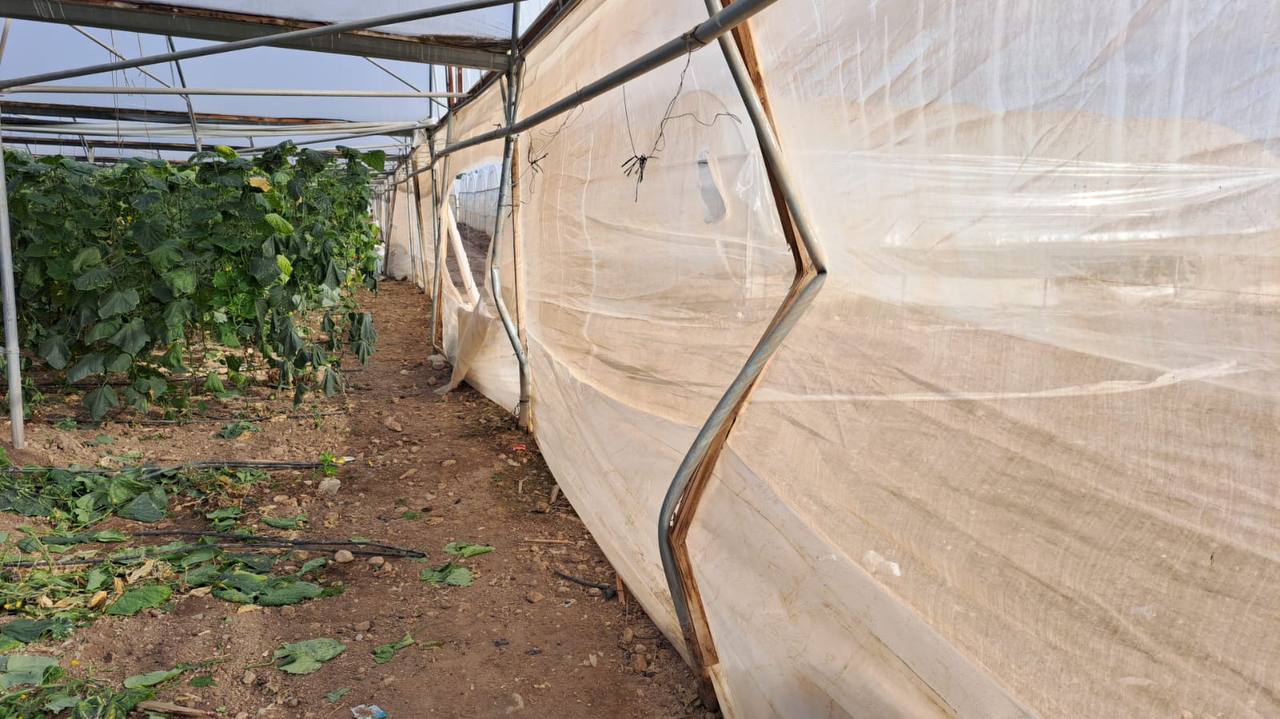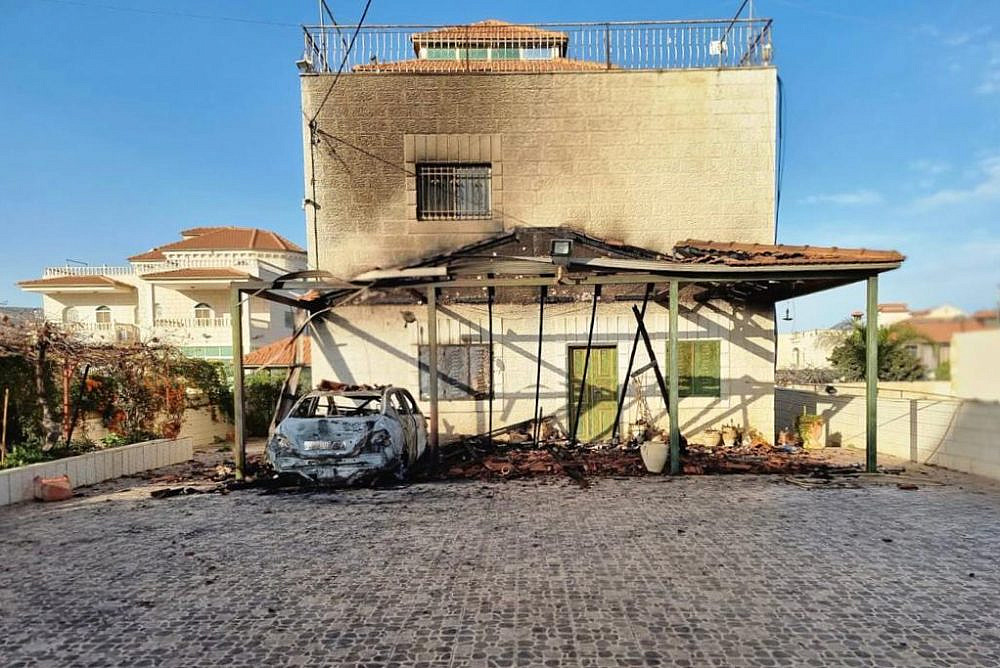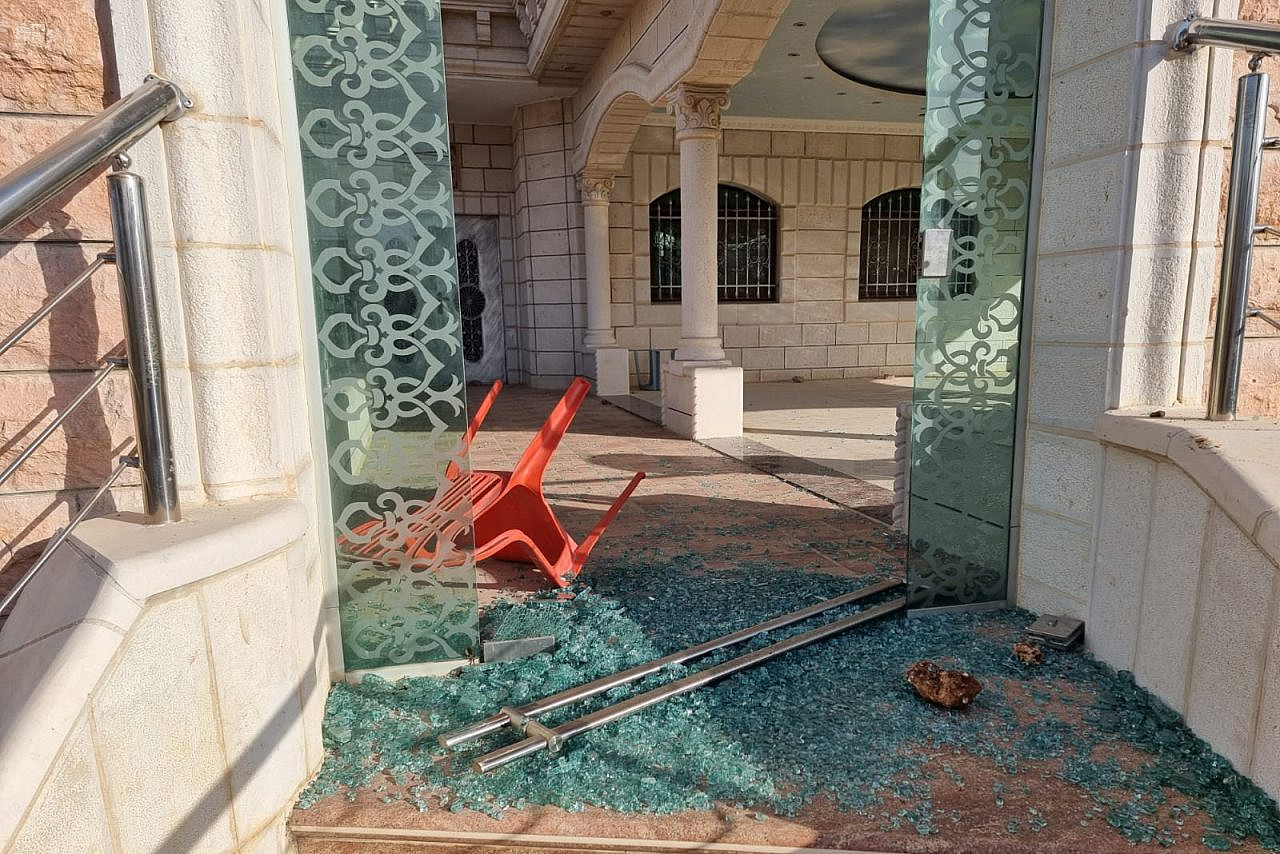Jewish terrorism has been rampaging throughout the occupied West Bank since a Palestinian shooting attack in the East Jerusalem settlement of Neve Ya’akov on Friday night, only a day after a deadly Israeli military raid in the Jenin refugee camp. In the 48 hours since the killing in Jerusalem, Palestinian sources reported more than a hundred cases of “price tag” attacks by Israeli settlers, many at which Israeli soldiers were present but did not intervene. Yet unlike with the Jerusalem attack, no government minister left their home in the middle of a family meal to console the victims; no Knesset member called for sealing the homes of the assailants; and no emergency cabinet meetings were held to address the alarming events.
While human rights organizations that track incidents of settler violence are still trying to get a handle on the flow of testimonies and reports, they are steadily confirming that the high numbers of attacks do appear to be accurate. Below is just a small sample of confirmed attacks documented by the NGO Yesh Din on the night between Saturday and Sunday:
In the late hours of the night, Israeli settlers ambushed Palestinian cars between the villages of Al-Mughayyir and Turmus Aya, throwing stones and damaging property. According to witnesses, it was a miracle that there were no casualties. Close to midnight, a large number of settlers also attacked the village of Qusra near Nablus, threw stones at houses, and caused serious damage to property.
Near the villages of Aqraba and Majdal Bani Fadil, which are also close to Nablus, dozens of Israelis have set up a new settlement outpost. Attacking and wounding the Palestinian landowners as they came to their land, the settlers set fire to three Palestinian vehicles, attacked an ambulance, and wounded a medic who ran to give first aid to the landowners.
In the northern Jordan Valley, close to the village of Al-Auja, settlers caused serious damage to greenhouses and fields belonging to Palestinians. In Huwara, a town near Nablus, settlers threw stones at houses during the night. The same occurred in Sinjil, near Ramallah, where settlers also damaged dozens of trees on the village’s lands.

The violence continued into Monday, when settlers attacked the village of Jalud, south of Nablus, during the day. They set fire to a car, and spray painted “price tag” and “Jews wake up” on a wall in the village. According to residents’ testimonies, soldiers present at the scene did nothing to stop the pogrom.
‘Every house has become a target’
One of the most serious attacks occurred on Saturday night in the village of Turmus Aya, where several settlers set fire to a house. Luckily, the house was empty at the time, averting a major tragedy akin to the infamous burning of the Dawabsheh family in Duma in July 2015.
The small village north of Ramallah is known for having some of the most beautiful houses between the river and the sea. Due to historical circumstances of migration and return, most of its Palestinian residents also hold U.S. citizenship, including the owner of the house that was set on fire. But holding an American passport offers no insurance against settler crimes.
Said Hussein is a veteran resident who also holds American citizenship. A landowning farmer, he fought for years against Israel’s seizure of his land for the benefit of the outposts and settlements in the vicinity. The largest of these is Shiloh, to which was added Amihai — a settlement built in 2017 for settlers evicted from the Amona outpost in 2014, following a Supreme Court ruling. The outposts of Adei Ad, Geulat Zion, and others were also built in the vicinity of Turmus Aya.
“They come at night, like a nightmare, while people are sleeping,” Hussein said of the settlers in fluent American English. “Last Saturday, they arrived at 1 a.m. Everyone was asleep in their houses. Someone saw the fire and called the residents, and all the villagers rushed there. We didn’t see the settlers, but in the camera footage you can see how many of them there were.”
Hussein stressed that it was a miracle that the family was not at home at the time of the arson. Perhaps because of this, the settlers returned to the village the following night to finish the job. “They attacked another house on Sunday,” he said. “They tried to set this one on fire too, but the residents arrived quickly and stopped them. That’s two nights in a row.
“The worst thing is that they’ve now started entering the village itself,” Hussein continued. “In the past they would set fire to trees and uproot them, but outside the village. We have a long history of facing settler violence and land grabbing, but now we have lost the sense of security inside our own homes. The feeling is that every house has become a target.”
A question about contacting the Israeli police made Hussein laugh. “Every time settlers attack, the police close the complaint due to an ‘unknown attacker.’ But the soldiers are all over this area all the time. They know the settlers well. How are our attackers unknown?”
Indeed, it is impossible to understand the reality in the West Bank without talking about the depth of the cooperation between the Israeli army and the settlers in the territory. The same army that knows very well how to invade Palestinian homes in the middle of the night, and drag small children from their beds over accusations of throwing a stone at an armored military jeep, suddenly becomes wilfully blind and deaf when it comes to Jewish terrorism.
The recent settler violence is in many ways a continuation of the army’s institutionalized violence, which made 2022 the deadliest year in the West Bank in nearly two decades. Judging by this past month — in which the army has already killed on average more than one Palestinian a day — 2023 could be even bloodier and deadlier.
A version of this article first appeared in Hebrew on Local Call. Read it here.




